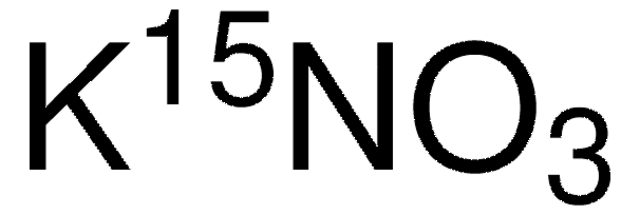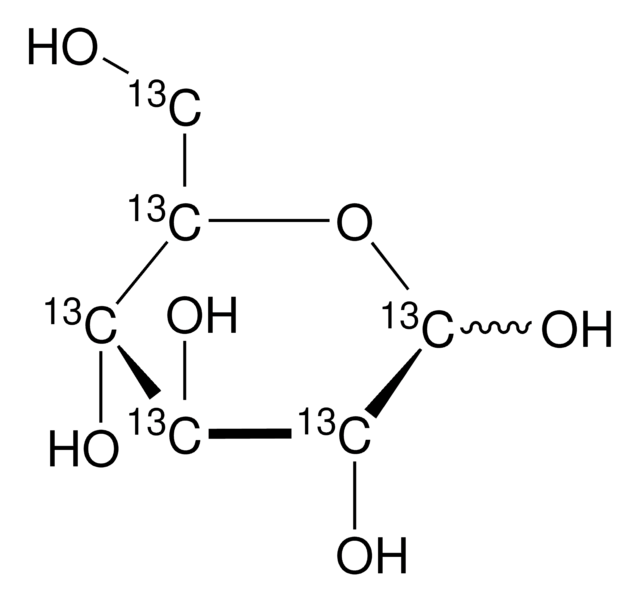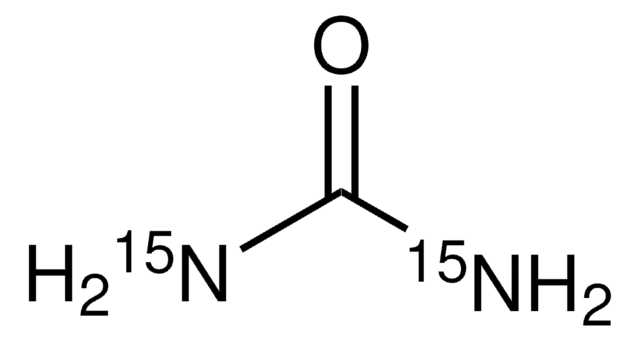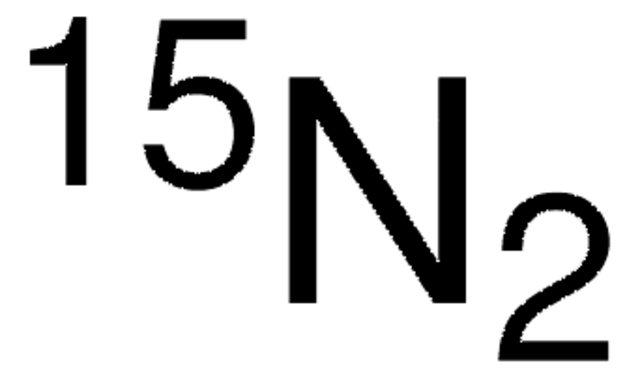366528
Ammonium nitrate-15N2
98 atom % 15N
Synonym(s):
Ammonium-15N nitrate-15N
Sign Into View Organizational & Contract Pricing
All Photos(1)
About This Item
Linear Formula:
15NH415NO3
CAS Number:
Molecular Weight:
82.03
MDL number:
UNSPSC Code:
12352102
PubChem Substance ID:
NACRES:
NA.12
Recommended Products
isotopic purity
98 atom % 15N
Quality Level
form
solid
bp
210 °C (lit.)
mp
169 °C (lit.)
mass shift
M+2
storage temp.
room temp
SMILES string
[15NH3].O[15N+]([O-])=O
InChI
1S/HNO3.H3N/c2-1(3)4;/h(H,2,3,4);1H3/i2*1+1
InChI key
PRORZGWHZXZQMV-NPMJFZSBSA-N
Looking for similar products? Visit Product Comparison Guide
Related Categories
General description
Ammonium nitrate-15N2 is an inorganic salt containing 15N isotope.
Application
Ammonium nitrate-15N2 has been used for
- Metabolic labeling of plants for quantitative plant proteomic experiments.
- Identifying specific compounds within mixtures of thousands of metabolites in biological extracts using mass spectrometry.
Packaging
This product may be available from bulk stock and can be packaged on demand. For information on pricing, availability and packaging, please contact Stable Isotopes Customer Service.
Signal Word
Warning
Hazard Statements
Precautionary Statements
Hazard Classifications
Eye Irrit. 2 - Ox. Sol. 3
Storage Class Code
5.1C - Ammonium nitrate and ammonium nitrate containing preparations
WGK
WGK 1
Flash Point(F)
Not applicable
Flash Point(C)
Not applicable
Choose from one of the most recent versions:
Already Own This Product?
Find documentation for the products that you have recently purchased in the Document Library.
Customers Also Viewed
Kyelle Byne et al.
Journal of experimental botany, 71(4), 1551-1561 (2019-11-13)
Environmental and physiological factors underlying variation in timing of autumn senescence are not well known. We investigated how the time of the onset of the growth in spring affects senescence and its functional consequences for nitrogen (N) uptake in autumn
Laurence V Bindschedler et al.
Methods in molecular biology (Clifton, N.J.), 893, 155-173 (2012-06-06)
Hydroponic isotope labeling of entire plants (HILEP) combines hydroponic plant cultivation and metabolic labeling with stable isotopes using (15)N-containing inorganic salts to label whole and mature plants. Employing (15)N salts as the sole nitrogen source for HILEP leads to the
Our team of scientists has experience in all areas of research including Life Science, Material Science, Chemical Synthesis, Chromatography, Analytical and many others.
Contact Technical Service











